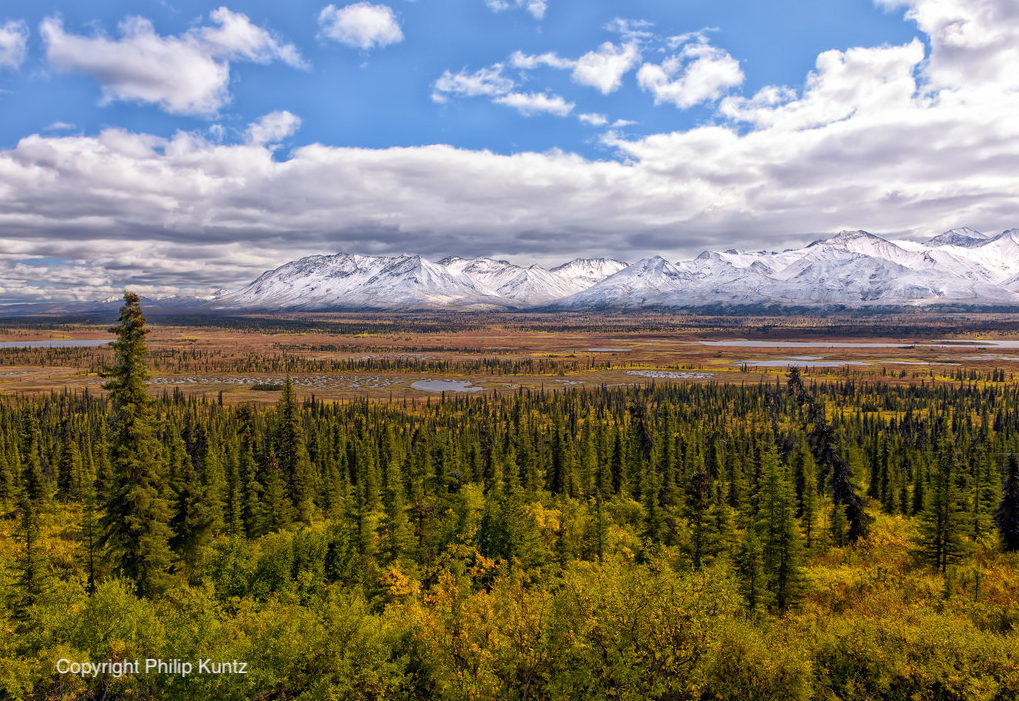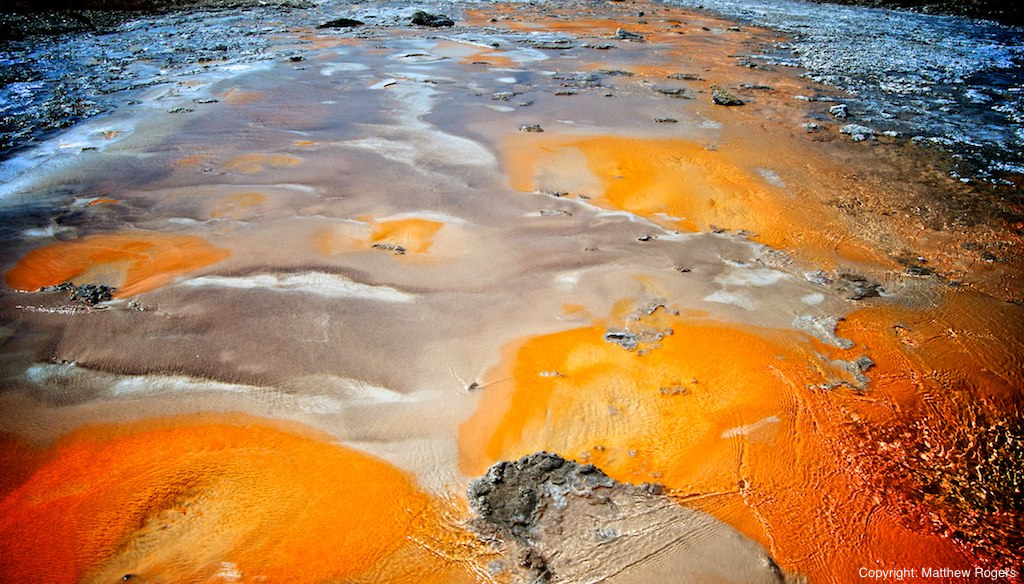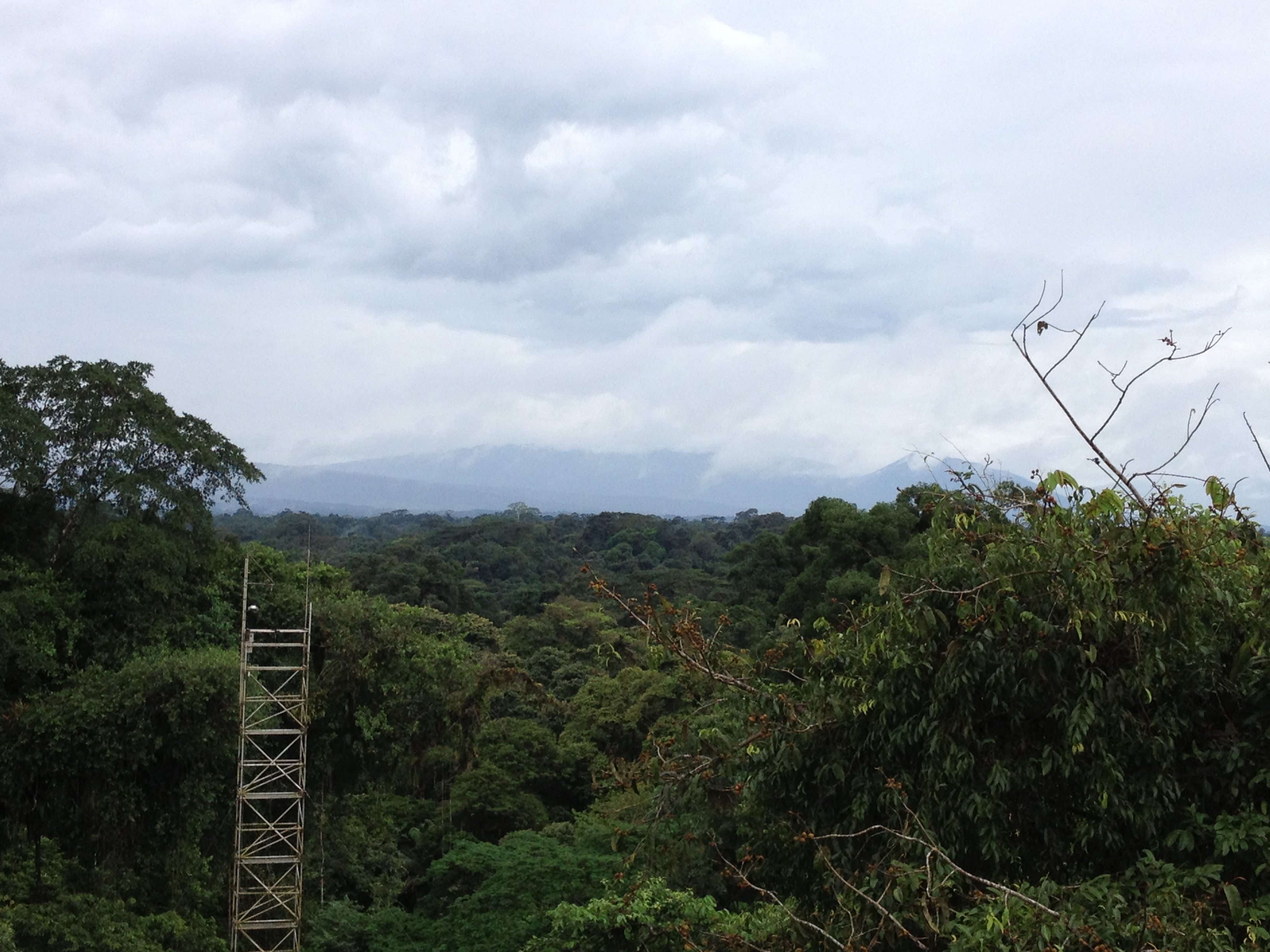Lee MacDonald
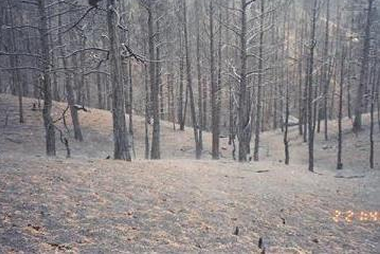
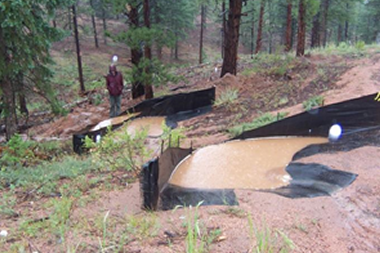
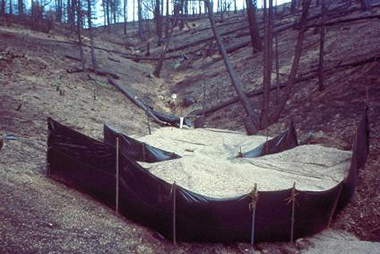
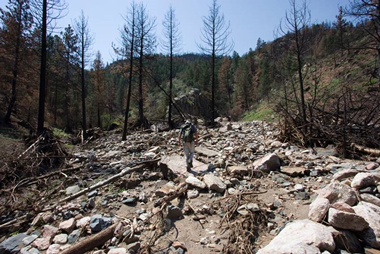
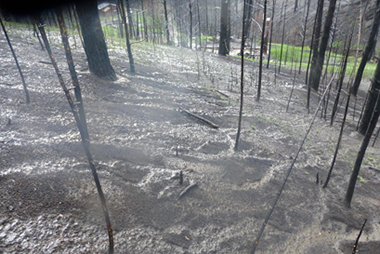
Publications
Books and Monographs
National Research Council, 2008. Hydrologic effects of a changing forest landscape. National Academies, Press, Washington, D.C. 142 pp.
Romme, W.H., J. Clement, J. Hike, D. Kulakowski, L.H. MacDonald, T.L. Schoennagel, and T.T. Veblen, 2006. Recent forest insect outbreaks and fire risk in Colorado forests: a brief synthesis of relevant research. Colorado Forest Restoration Institute, Colorado State University, Fort Collins, CO. 24pp.
MacDonald, L.H., and J.D. Stednick, 2003. Forests and water: a state-of-the-art review for Colorado. Colorado Water Resources Research Institute, Colorado State University, Fort Collins, CO. 65 pp.
Bunte, K., and L.H. MacDonald, 1999. Scale considerations and the detectability of sedimentary cumulative watershed effects (29Mb). Technical Bulletin No. 776, National Council for Air and Stream Improvement, Research Triangle Park, NC. 327 pp. (The abstract and conclusions only are available here 3Mb).
MacDonald, L.H., E.E. Wohl, and S.W. Madsen, 1997. Validation of water yield thresholds on the Kootenai National Forest. Kootenai National Forest, Libby, Montana. 197 pp. plus app.
Binkley, D., and L.H. MacDonald, 1994. Forests as non-point sources of pollution, and effectiveness of Best Management Practices. NCASI Technical Bulletin No. 672, National Council for Air and Stream Improvement, New York, N.Y. 57 pp.
MacDonald, L.H. (with A. Smart and R.C. Wissmar), 1991. Monitoring guidelines to evaluate effects of forestry activities on streams in the Pacific Northwest and Alaska (48Mb). EPA/910/9-91-001, U.S. Environmental Protection Agency Region 10, Seattle, WA. 166 pp. Reprinted in 1992 (total of 12,000 copies).
MacDonald, L.H., 1989. Snowmelt and runoff in the Central Sierra Nevada: effects of forest harvest and cloud-seeding. Ph.D. dissertation, University of California, Berkeley, 261 pages plus appendices.
MacDonald, L.H., 1986. Natural resources development in the Sahel: the role of the U.N. system. Natural Resources Technical Series, United Nations University, Tokyo, 95 pp.
MacDonald, L.H. (ed.), 1982. Agro-forestry in the African humid tropics. Natural Resources Technical Series, United Nations University, Tokyo, 163 pp. (also translated into French). Reprinted in 1984.
Journal Articles, Proceedings, Reports, and Book Chapters
Ramos-Scharrón, C.E., E.E. Alicea-Diaz, Y.Figueroa-Sanchez, M.C. LeFevor, P. Mclaughlin, L.H. MacDonald, K. Reale-Munroe, E.L. Thomaz, R. Viqueira-Rios, in press. Three decades of road and trail runoff and erosion in the northeastern Caribbean – a research perspective. In Proceedings, Soil Erosion Research Under a Changing Climate, American Society of Agricultural and Biological Engineers, 8 pp.
Stubblefield, A.P., C. Faubion, L. MacDonald, S. Beach, N. Harrison, A. Niepoth, M. Sparacino, 2021. Evaluation of Best Management Practices in Railroad Gulch, Elk River Watershed: Final Report. Cal-Fire, Sacramento, California. 152 pp. plus appendices.
Wilson, C.R., S.K. Kampf, S. Ryan, T. Covino, L.H. MacDonald, and H. Gleason, 2021*. Connectivity of post-fire runoff and sediment from nested hillslopes and watersheds. Hydrological Processes 35(1), p.e13975. http://doi.org/10.1002/hyp.13975.
Fisher, A., P. Belmont, B.P. Murphy, L. MacDonald, K.L. Ferrier, and K. Hu, 2021*. Natural and anthropogenic controls on sediment rating curves in Northern California coastal watersheds. Earth Surface Processes and Landforms.
Kampf, S.K., B. Gannon, C. Wilson, F. Saavedra, M.E. Miller, A. Heldmeyer, B. Livneh, P. Nelson, and L. MacDonald, 2020*. PEMIP: Post-fire erosion model inter-comparison project. Journal of Environmental Management 268 p. 110704.
Wilson, C.R., S.K. Kampf, J.W. Wagenbrenner, L.H. MacDonald, and H. Gleason, 2020*. Hillslope sediment fence catch efficiencies and particle sorting for post-fire rain storms. Earth Surface Processes and Landforms 46(1): 267-275.
Ferrier, K., L.H. MacDonald, P. Belmont, and K. Hu, 2020. 10Be concentrations in stream sediment and inferred denudation rates in the Little River and Elk River basins, northern Colorado Coast Ranges. HydroShare, https://doi.org/10.4211/hs.b7515f219c7a40439c9c2b44183192c4.
Brogan, D.J., P.A. Nelson, and L.H. MacDonald, 2019*. Spatial and temporal patterns of sediment storage and erosion following a wildfire and extreme flood. Earth Surface Dynamics 7: 563-590. doi.org/10.5194/esurf-7-563-2019.
MacDonald, L.H, D.J. Brogan, P.A. Nelson, S.K. Kampf, and J.W. Wagenbrenner, 2019*. Scaling post-fire effects from hillslopes to watersheds: processes, problems, and implications. In Proceedings, Federal Interagency Sedimentation and Hydrologic Modeling Conference, 6 pages.
MacDonald, L.H, G. Sosa-Pérez, and C. Carlos-Scharrón, 2019*. Sediment production and delivery from unpaved roads: a little-recognized but significant sediment source. In Proceedings, Federal Interagency Sedimentation and Hydrologic Modeling Conference, 6 pages.
MacDonald, L.H, D.J. Brogan, P.A. Nelson, and S.K. Kampf, 2019*. Fires and floods: a case study of the relative magnitude and persistence of geomorphic effects at the watershed scale. In Proceedings, Federal Interagency Sedimentation and Hydrologic Modeling Conference, 7 pages.
Brogan, D.J., L.H. MacDonald, P.A. Nelson, and J.A. Morgan, in review*. Channel geomorphic complexity and sensitivity to fires and floods in mountain catchments. Submitted to Geomorphology 337: 53-68.
Gannon, B.M, Y. Wei, L.H. MacDonald, S.K. Kampf, K.W. Jones, J.B. Cannon, B.H. Wolk, A.S. Cheng, R.N. Addington, and M.P. Thompson, 2020. Prioritizing fuels reductions for water supply protection. Corrigendum. International Journal of Wildland Fire 29: 1054-1055 https://doi.org/10.1071/WF18182_CO.
Gannon, B., Y. Wei, L. MacDonald, S. Kampf, K. Jones, J. Cannon, B. Wolk, A. Cheng, and R. Addington. Prioritizing fuels reductions for water supply protection. Submitted to International Journal of Wildland Fire. https://doi.org/10.071/WF18182. 19 pages. Correction in IJWF, 2020, 29: 1054-1055 https://doi.org/10.1071/WF18182_CO.
Wilson, C., S. Kampf, J. Wagenbrenner, and L. MacDonald, 2018*. Rainfall thresholds for post-fire runoff and sediment delivery from plot to watershed scales. Forest Ecology and Management 430: 346-356.
Schmeer, S., S.K. Kampf, L.H. MacDonald, J. Hewitt, and C. Wilson, 2018. Empirical models of annual post-fire erosion on mulched and unmulched hillslopes. Catena 163:276-287.
MacDonald, L.H., 2018. Post-fire debris flow problems aren’t new and likely to get worse. The Conversation, 16 January 2018, 5 pp.
MacDonald, L.H., and G. Sosa-Pérez, 2018. Decommissioning unpaved forest roads: alternatives and effectiveness.Stream Notes, February 2018, pp.7-12.
Sosa-Pérez, G., and L.H. MacDonald, 2017. Effects of closed roads, traffic, and two road decommissioning treatments on infiltration and sediment production: a comparative study using rainfall simulations. Catena 159:93-105.
Brogan, D.J., Nelson, P.A. and MacDonald, L.H., 2017. Reconstructing extreme post‐wildfire floods: a comparison of convective and mesoscale events. Earth Surface Processes and Landforms, 42(15), pp.2505-2522.
MacDonald, L.H., M.W. Miles, S. Beach, N.M. Harrison, M.R. House, P. Belmont, and K.L. Ferrier, 2017. Development and implications of a sediment budget for the Upper Elk River Watershed, Humboldt County, California. In Coast Redwood Science Symposium—2016: Past successes and future direction, U.S.D.A. Forest Service PSW-GTR-258, Pacific Southwest Station, Albany, CA, pp. 163-173.
Sosa-Pérez, G., and L.H. MacDonald, 2017. Reductions in road sediment production and road-stream connectivity from two decommissioning treatments. Forest Ecology and Management398:116-129.
Jones, K.W., J.B. Cannon, F.A. Saavedra, S.K. Kampf, R.N. Addington, A.S. Cheng, L.H. MacDonald, C. Wilson, and B. Wolk, 2017* (latter authors in alphabetical order). Return on investment from fuel treatments to reduce severe wildfire and erosion in a watershed investment program in Colorado. Journal of Environmental Management198:66-77.
MacDonald, L.H., and G. Sosa-Pérez, 2017. Fire effects on road sediment production and delivery. Stream Notes, February 2017, pp.7-10.
Cotrufo, M.F., C.M. Boot, S. Kampf, P.A. Nelson, D.J. Brogan, T. Covino, M.L. Haddix, L.H MacDonald, S. Rathburn, S. Ryan-Burkett, S. Schmeer, and E. Hall, 2016*. Redistribution of pyrogenic carbon from hillslopes to stream corridors following a large sub-alpine wildfire. Global Biogeochemical Cycles10.1002/2016GB005467, 8 pp.
Sosa-Perez, G., and L.H. MacDonald, 2016*. Effects of a wildfire on road surface erosion and road-stream connectivity. Earth Surface Processes and LandformsDOI: 10.1002/esp.4018. 14 pp.
Kampf, S.K., D.J. Brogan, S. Schmeer, L.H. MacDonald, and P.A. Nelson, 2016*. How do geomorphic effects of rainfall vary with storm type and spatial scale in a post-fire landscape? Geomorphology273: 39-51.
Wagenbrenner, J.W., L.H. MacDonald, R.N. Coats, P.R. Robichaud, and R.E. Brown, 2015*. Effects of post-fire salvage logging on ground cover, soils and sediment production in the interior western USA. Forest Ecology and Management 335:179-193.
MacDonald, L.H., 2014. Linking universities, forestry research, and its applications. In Proceedings, Workshop on Linkage of Research, Training, and Production Development for Restructuring the Forestry Sector in Vietnam, 14-15 November, Hanoi, Vietnam, pp. 243-253.
Anh, P.T.Q., T. Gomi, L.H. MacDonald, S. Miugaki, P.V. Khoa, and T. Furuichi, 2014*. Linkages among land use, macronutrient levels, and soil erosion in northern Vietnam: A plot-scale study. Geoderma http://dx.doi.org/10.1016/j.geoderma.2014.05.011, 11 pp.
Prats, S. A., M. A. S. Martins, M. C. Malvar, Diana CS Vieira, C. O. A. Coelho, Artemi B. Cerdà, Lee MacDonald, Antonio JD Ferreira, and J. J. Keizer. “APLICAÇÃO DE “MULCH” APÓS FOGO: UM MÉTODO EFECTIVO PARA A REDUÇÃO DA ESCORRÊNCIA E DA EROSÃO.”
Tuan, Vu Dinh, Thomas Hilger, Lee MacDonald, Gerhard Clemens, Erisa Shiraishi, Tran Duc Vien, Karl Stahr, and Georg Cadisch, 2014. Mitigation potential of soil conservation in maize cropping on steep slopes. Field Crops Research 156: 91-102.
Rocca, Monique E., Peter M. Brown, Lee H. MacDonald, and Christian M. Carrico, 2014. Climate change impacts on fire regimes and key ecosystem services in Rocky Mountain forests. Forest Ecology and Management.
Prats, S.A., L.H. MacDonald, M. Monteiro, A.J.D. Ferreira, C.O.A. Coelho, and J.J. Keizer, 2012*. Effectiveness of forest residue mulching in reducing post-fire runoff and erosion in a pine and a eucalypt plantation in north-central Portugal. Geoderma doi:10.1016/j.geoderma.2012.02.009. 10 pp.
Tuan, V.D., T. Hilger, E. Shiraishi, G. Clemens, L. MacDonald, and G. Cadisch, 2012. Erosion on steep and fragmented lands: mitigation potential of soil conservation for maize cropping in north-western Vietnam. Proceedings, 3rd International Conference on Conservation Agriculture in Southeast Asia, 10-15 December 2012, Hanoi, pp. 243-245.
MacDonald, L.H., 2012. Dr. Lee H. MacDonald, 2008 U.S. Faculty Scholar. Excellence in educational exchange: stories of VEF Fellows and Scholars, Vietnam Education Foundation. 3 pp.
MacDonald, L.H., 2012. Lessons learned after 30 years in watershed science. Colorado Water 29(2):29-32.
Miller, M.E., L.H. MacDonald, P.R. Robichaud, and W.E. Elliot, 2011*. Predicting post-fire erosion in the western U.S. International Journal of Wildland Fire 20: 982-999.
MacDonald, L.H., and I.J. Larsen, in press*. Runoff and erosion from wildfires, roads, and forest management: effects and mitigation in the Colorado Front Range. In Land Restoration to Combat Desertification: Innovative Approaches, Quality Control and Project Evaluation, International Center for Advanced Mediterranean Agronomic Studies, Zaragoza, Spain.
Robichaud, P.R., L.H. MacDonald, and R.B. Foltz, 2010. Chapter 5: Fuel management and erosion. In Cumulative Effects of Fuels Management in the Western United States, USDA Forest Service General Technical Report RMRS-231, Fort Collins, CO, pp. 246-276.
Troendle, C.A., L.H. MacDonald, C.H. Luce, and I.J. Larsen, 2010. Chapter 7: Fuel management and water yield. In Cumulative Watershed Effects of Fuels Management: A Western Synthesis. Gen. Tech. Rep., U.S. USDA Forest Service General Technical Report RMRS-231, Fort Collins, CO, pp. 126-148.
Elliot, W.E., K. Hyde, L.H. MacDonald, and J. McKean, 2010. Chapter 13: Tools for analysis. In Cumulative Effects of Fuels Management in the Western United States, USDA Forest Service General Technical Report RMRS-231, Fort Collins, CO, pp. 246-276.
Litschert, S.E., and L.H. MacDonald, 2009. Frequency and characteristics of sediment delivery pathways from forest harvest units to streams. Forest Ecology and Management 259: 143-150.
Larsen, I.J., L.H. MacDonald, E. Brown, D. Rough, M.J. Welsh, J.H. Pietraszek, Z. Libohova, and K. Schaffrath, 2009. Causes of post-fire runoff and erosion: the roles of soil water repellency, surface cover, and soil sealing. Soil Science Society of America Journal 73(4): 1393-1407.
Doerr, S.H., R.A. Shakesby, and L.H. MacDonald, 2009. Soil Water Repellency: A Key Factor in Post-Fire Erosion. In Fire Effects on Soils and Restoration Strategies, edited by A. Cerda and P.R. Robichaud. Science Publishers, Enfield, NH, pp. 197-223.
MacDonald, L.H., and I.J. Larsen, 2009. Effects of forest fires and post-fire rehabilitation: a Colorado Case study. In Fire Effects on Soils and Restoration Strategies, edited by A. Cerda and P.R. Robichaud. Science Publishers, Enfield, NH, pp. 423-452.
Jones, J.A., G.L. Achterman, L.A. Augustine, I.F. Creed, P.F. Ffolliott, L. MacDonald, and B.C. Wemple, 2009. Hydrologic effects of a changing forest landscape-challenge for the hydrological sciences. Invited commentary, Hydrological Processes 23: 2699-2704.
Benavides Solorio, J. de D., L. MacDonald, and J. G. Flores Garnica, 2009. Escurrimiento y erosion despues de dos incendios forestales y una quema prescrita utilizando simulador de lluvia. In Impacto Ambiental de Incendios Forestales, Mundi-Prensa, Cuauhtemoc, Mexico, pp. 243-264.
MacDonald, L.H., and P. R. Robichaud, 2008. Postfire erosion and the effectiveness of emergency rehabilitation treatments over time. Stream Notes, USDA Forest Service, Rocky Mountain Research Station. 6 pp.
MacDonald, L.H., and I.J. Larsen, 2008. Sediment production and delivery from wildfires: processes and mitigation. In Proceedings of the First World Landslide Forum, United Nations University, Tokyo, Japan. International Consortium on Landslides, Japan, pp. 381-384.
MacDonald, L.H., and D.B.R. Coe, 2008. Road sediment production and delivery: processes and management. In Proceedings of the First World Landslide Forum, United Nations University, Tokyo, Japan. International Consortium on Landslides, Japan, pp. 385-388.
MacDonald, L.H., and D.B. Coe, 2007. Influence of headwater streams on downstream reaches in forested areas. Forest Science 53(2): 148-168 (invited review paper).
Larsen, I.J., and L.H. MacDonald, 2007. Predicting post-fire sediment yields at the hillslope scale: Testing RUSLE and Disturbed WEPP.Water Resources Research doi:10.1029/2006WR005560, 18 pp.
Ramos-Sharron, C. and L.H. MacDonald, 2007. Development and application of a GIS-based sediment budget model. Environmental Management, 84: 157-172.
Ramos-Sharron, C. and L.H. MacDonald, 2007. Measurement and prediction of natural and anthropogenic sediment sources in St. John, U.S. Virgin Islands Catena, 71: 250-266.
Erskine, R.H., T.R. Green, J.A. Ramirez, and L.H. MacDonald, 2007. Digital Elevation Accuracy and Grid Cell Size: Effects on Estimated Terrain Attributes. Soil Science Society Journal of America 71: 1371-1380.
Ramos-Sharron, C. and L.H. MacDonald, 2007. Runoff and suspended sediment yields from an unpaved road segment, St. John, U.S. Virgin Islands. Hydrological Processes 21:35-50.
Woods, S.W., L. H. MacDonald, and C. J. Westbrook, 2006. Hydrologic interactions between an alluvial fan and a slope wetland in the central Rocky Mountains, USA. Wetlands 26(1): 230-243.
Wagenbrenner, J.W., L.H. MacDonald, and D. Rough, 2006. Effectiveness of three post-fire rehabilitation treatments in the Colorado Front Range. Hydrological Processes, 20: 2989-3006.
Conovitz, P. and L.H. MacDonald, 2006. Spatial and temporal active layer dynamics along three glacial meltwater streams in the McMurdo Dry Valleys. Arctic, Antarctic, and Alpine Research 38(1): 42-53.
Erskine, R.H., T.R. Green, J.A. Ramirez, and L.H. MacDonald, 2006. Comparison of grid-based algorithms for computing upslope contributing area. Water Resources Research 42 W09146, doi:10.1029/2005WR004648.
Benavides-Solorio, J. and L. H. MacDonald, 2005. Measurement and prediction of post-fire erosion at the hillslope scale, Colorado Front Range. International Journal of Wildland Fire 14:1-18.
Ramos-Sharron, C., and L.H. MacDonald, 2005. Measurement and prediction of sediment production from unpaved roads, St. John, U.S. Virgin Islands. Earth Surface Processes and Landforms 30:1283-1304.
Mzuku, M., R. Khosla, R. Reich, D. Inman, F. Smith, and L. MacDonald, 2005. Spatial variability of measured soil properties across site-specific management zones. Soil Science Society of America Journal 69: 1572-1579.
MacDonald, L. H., D.B. Coe, and S.E. Litschert, 2004. Assessing cumulative watershed effects in the Central Sierra Nevada: hillslope measurements and catchment-scale modeling, pp 149-157. IN Murphy, D. D. and P. A. Stine Editors. 2004. Proceedings of the Sierra Nevada Science Symposium; 2002 October 7-10; Kings Beach, CA; Gen. Tech. Rep. PSW_GTR-193. Albany, CA. Pacific Southwest Research Station, Forest Service, U.S. Department of Agriculture; 287 p.
MacDonald, L.H., and E.L. Huffman, 2004. Post-fire soil water repellency: persistence and soil moisture thresholds. Soil Science Society of America Journal 68:1729-1734.
Robichaud, P.R., L. H. MacDonald, J. Freeouf, D. Neary, and D. Martin, 2003 . Post-fire rehabilitation of the Hayman Fire. In R.T. Graham (ed.), Hayman Fire Case Study Analysis, USDA Forest Service RMRS-GTR-114, Fort Collins, Colorado, pp. 293-313. http://www.fs.fed.us/rm/pubs/rmrs_gtr114/rmrs_gtr114_5.pdf. For entire General Technical Report go to: www.fs.fed.us/rm/hayman_fire.
Kershner, J.L., L. MacDonald, L.M. Decker, and K. Winters, 2003. Fire-induced changes in aquatic ecosystems. In R.T. Graham (ed.), Hayman Fire Case Study Analysis, USDA Forest Service RMRS-GTR-114, Fort Collins, Colorado, pp. 232-243. http://www.fs.fed.us/rm/pubs/rmrs_gtr114/rmrs_gtr114_3.pdf. For entire General Technical Report go to: www.fs.fed.us/rm/hayman_fire.
Cipra, J.E., E.F. Kelly, and L.H. MacDonald, 2003. Soil properties, erosion, and implications for rehabilitation and aquatic ecosystems. In R.T. Graham (ed.), Hayman Fire Case Study Analysis, USDA Forest Service RMRS-GTR-114, Fort Collins, Colorado, pp. 204-219. http://www.fs.fed.us/rm/pubs/rmrs_gtr114/rmrs_gtr114_3.pdf. For entire General Technical Report go to: www.fs.fed.us/rm/hayman_fire.
MacDonald, L.H., 2002. Effects of changes in Colorado’s forests on water yields and water quality. Colorado Water 19(5), 3 pp.
MacDonald, L.H., and J.D. Stednick, 2002. CSU faculty and students study the after-effects of wildfires on Colorado’s Front Range. Colorado Water 19: 7-9.
Montgomery, D.A., and L.H. MacDonald, 2002. Diagnostic approach to stream channel assessment and monitoring. Journal of the American Water Resources Association 38(1):1-16.
Benavides-Solorio, J., and L.H. MacDonald, 2002. Errata “Post-fire runoff and erosion from simulated rainfall on small plots, Colorado Front Range”. Hydrological Processes 16: 1129-1133.
Benavides-Solorio, J., and L.H. MacDonald, 2001. Post-fire runoff and erosion from simulated rainfall on small plots, Colorado Front Range. Hydrological Processes 15: 2931-2952.
Huffman, E.L., L.H. MacDonald, and J.D. Stednick, 2001. Strength and persistence of fire-induced soil hydrophobicity under ponderosa and lodgepole pine, Colorado Front Range. Hydrological Processes 15:2877-2892.
Loftis, J.C., L.H. MacDonald, S. Streett, H.K. Iyer, and K. Bunte, 2001. Detecting cumulative effects: the statistical power of pairing.Journal of Hydrology 251: 49-64.
MacDonald, L.H., R.W. Sampson, and D.M. Anderson, 2001. Runoff and road erosion at the plot and road segment scale, St. John, U.S. Virgin Islands. Earth Surface Processes and Landforms 26:1-22 (February 2001).
MacDonald, L.H., R.W. Sampson, D. Brady, L. Juarros, and D. Martin, 2000. Predicting post-fire erosion and sedimentation risk on a landscape scale: a case study from Western Colorado. Journal of Sustainable Forestry 11: 57-87. Also published as a chapter in R.N. Sampson, R.D. Atkinson, and J.W. Lewis (eds.), Mapping Wildfire Hazards and Risks, The Haworth Press, Binghamton, N.Y.
MacDonald, L.H., 2000. Evaluating and managing cumulative effects: process and constraints. Environmental Management 26(3): 299-315.
Cooper, D.J., and L.H. MacDonald, 2000. Restoring the vegetation of mined peatlands in the Southern Rocky Mountains of Colorado, U.S.A. Restoration Ecology 8: 103-111.
MacDonald, L.H., 2000. Predicting and managing cumulative watershed effects. Proceedings, Watershed Management 2000, American Society of Civil Engineers, 10 pp.
Loftis, J.C., and L.H. MacDonald, 2000. Exploring the benefits of paired watersheds for detecting cumulative effects. Proceedings, Watershed Management 2000, American Society of Civil Engineers, 9 pp.
Reid, K.D., B.P. Wilcox, D.D. Breshears, and L.H. MacDonald, 1999. Runoff and erosion in a pinon-juniper woodland: influence of vegetation patches. Soil Science Society of America Journal 63: 1869-1879.
Cooper, D.J., L.H. MacDonald, S.K. Wenger, and S.W. Woods, 1998. Hydrologic restoration of a fen in Rocky Mountain National Park.Wetlands 18(3): 335-345.
Schnackenberg, E.S., and L.H. MacDonald, 1998. Detecting cumulative effects in headwater streams on the Routt National Forest, Colorado. Journal of American Water Resources Association 34(5): 1163-1177.
Anderson, D.M., and L. H. MacDonald, 1998. Modeling road surface sediment production using a vector geographic information system. Earth Surface Processes and Landforms 23:95-107.
Conovitz, P.A., D.M. McKnight, L.H. MacDonald, A. Fountain, and H.R. House, 1998. Hydrologic processes influencing streamflow variation in Fryxell Basin, Antarctica. In J. Priscu (ed.), Ecosystem Dynamics in a Polar Desert: The McMurdo Dry Valleys, Antarctica,American Geophysical Union, Washington, D.C., pp. 93-108.
MacDonald, L.H., D.M. Anderson, and W.E. Dietrich, 1997. Paradise threatened: land use and erosion on St. John, U.S. Virgin Islands.Environmental Management 21(6):851-863.
Wohl, E., S. Madsen, and L. MacDonald, 1997. Characteristics of log and clast bed steps in step-pool streams of Northwestern Montana, USA. Geomorphology 20:1-10.
MacDonald, L.H., and C.T. Carmichael, 1996. Monitoring the effects of forestry on streams: variable selection and the development of an expert system. Environmental Monitoring and Assessment 40:55-73.
Bunte, K., and L.H. MacDonald, 1995. Detecting changes in sediment loads: where and how is it possible? In W. Osterkamp (ed.), Effects of Scale on Interpretation and Management of Sediment and Water Quality, International Association of Hydrological Sciences Publication no. 226, pp. 253-261.
Anderson, D.A., and L.H. MacDonald, 1995. An investigation of sediment sources affecting marine resources at Virgin Islands National Park. Park Science 15(2):26-28.
MacDonald, L.H., and J.A. Hoffman, 1995. Causes of peak flows in Northwestern Montana and Northeastern Idaho. Water Resources Bulletin 31(1):79-95.
MacDonald, L.H., 1994 . Developing a monitoring project. Journal of Soil and Water Conservation 49(3):221-227.
MacDonald, L.H., 1993. Sediment monitoring: reality and hope. In EPA/USFS Technical Workshop on Sediments, Terrene Institute, Washington, D.C., pp. 81-88.
MacDonald, L.H., 1993. Developing a field component in hydrologic education. Water Resources Bulletin 29(3):357-368.
MacDonald, L.H., 1993. Beyond the guidelines: practical lessons in monitoring. Environmental Monitoring and Assessment 26:203-218.
MacDonald, L.H., 1992. Hydrologic education: the need for a field component. In Water Resources and Environment: Education, Training, and Research, Colorado Water Resources Research Institute Information Series No. 69, Fort Collins, Colorado, pp. 57-65.
Naiman, R.N., T.J. Beechie, L. Benda, D.R. Berg, P.A. Bisson, L.H. MacDonald, M. O’Connor, P. Olson, and E.A. Steel, 1992. Fundamental elements of ecologically healthy watersheds in the Pacific Northwest Coastal Ecoregion. In Naiman, R.J. (ed.), Watershed Management: Balancing Sustainability and Environmental Change, Springer-Verlag, New York, pp. 127-188.
MacDonald, L.H., A. Smart, and R.C. Wissmar, 1991. Guidelines for monitoring nonpoint pollution: effects of forestry on streams in the Pacific Northwest and Alaska. In Nonpoint Source Pollution: The Unfinished Agenda for the Protection of Our Water Quality, Washington Water Research Center Report No. 78, Tacoma, Washington, pp. 411-420.
MacDonald, L.H., 1989. Rehabilitation and recovery following wildfires: a synthesis. In Proceedings of the Symposium on Fire and Watershed Management, U.S. Forest Service General Technical Report PSW-109, pp. 141-144.
MacDonald, L.H., 1989. Cloud-seeding and streamflow in the Central Sierra Nevada of California. In Cloud Physics and Weather Modification Research Programme, WMO/TD No. 269, World Meteorological Organization, Geneva, Switzerland, pp. 367-370.
MacDonald, L.H., 1989. Swimming: fitness afloat. Diabetes Forecast, July, pp. 28-31.
Coats, R., and L.H. MacDonald, 1988. Use of hydrologic criteria in wetland determination. In Urban Wetlands, Proceedings of the National Wetland Symposium, Association of Wetland Managers, Berne, N.Y., pp. 164-172.
MacDonald, L.H., 1988. An inexpensive portable system for drilling into subsurface layers. Soil Science Society of America Journal52:1817-1819.
MacDonald, L.H., 1987. Forest harvest, snowmelt and streamflow in the Central Sierra Nevada. In R.H. Swanson et al. (eds.), Forest Hydrology and Watershed Management, International Association of Hydrologic Sciences Publication no. 167, pp. 273-284.
Rector, J.R., and L.H. MacDonald, 1987. Water yield opportunities on National Forest lands in the Pacific Southwest Region. In Proceedings, California Watershed Management Conference, Report No. 11, Wildland Resources Center, University of California, Berkeley, pp. 68-73.
MacDonald, L.H., 1986. Persistence of soil moisture changes resulting from artificially-extended snowmelt. Proceedings, 54th Western Snow Conference: 146-149.
MacDonald, L.H., 1982. Agro-forestry in the African humid tropics. Commonwealth Forestry Review 61(1): 43-45.
Manshard, W., and L.H. MacDonald, 1979. Survival, development and welfare. Mazingira 12:51-59.
Manshard, W., and L.H. MacDonald, 1979. Programme on the use and management of natural resources 1977-78. Geojournal 3(1): 105-108.
MacDonald, L.H., 1978. The natural resources program at the U. N. University. Natural Resources and Energy 2(4).
Burgers, A.C.J., and L.H. MacDonald, 1977. Networks as a means for development. Microbio. News. 2(2):12-16.
MacDonald, L.H., 1977. The natural resources programme at the United Nations University. Geojournal 1(6):87-93.

